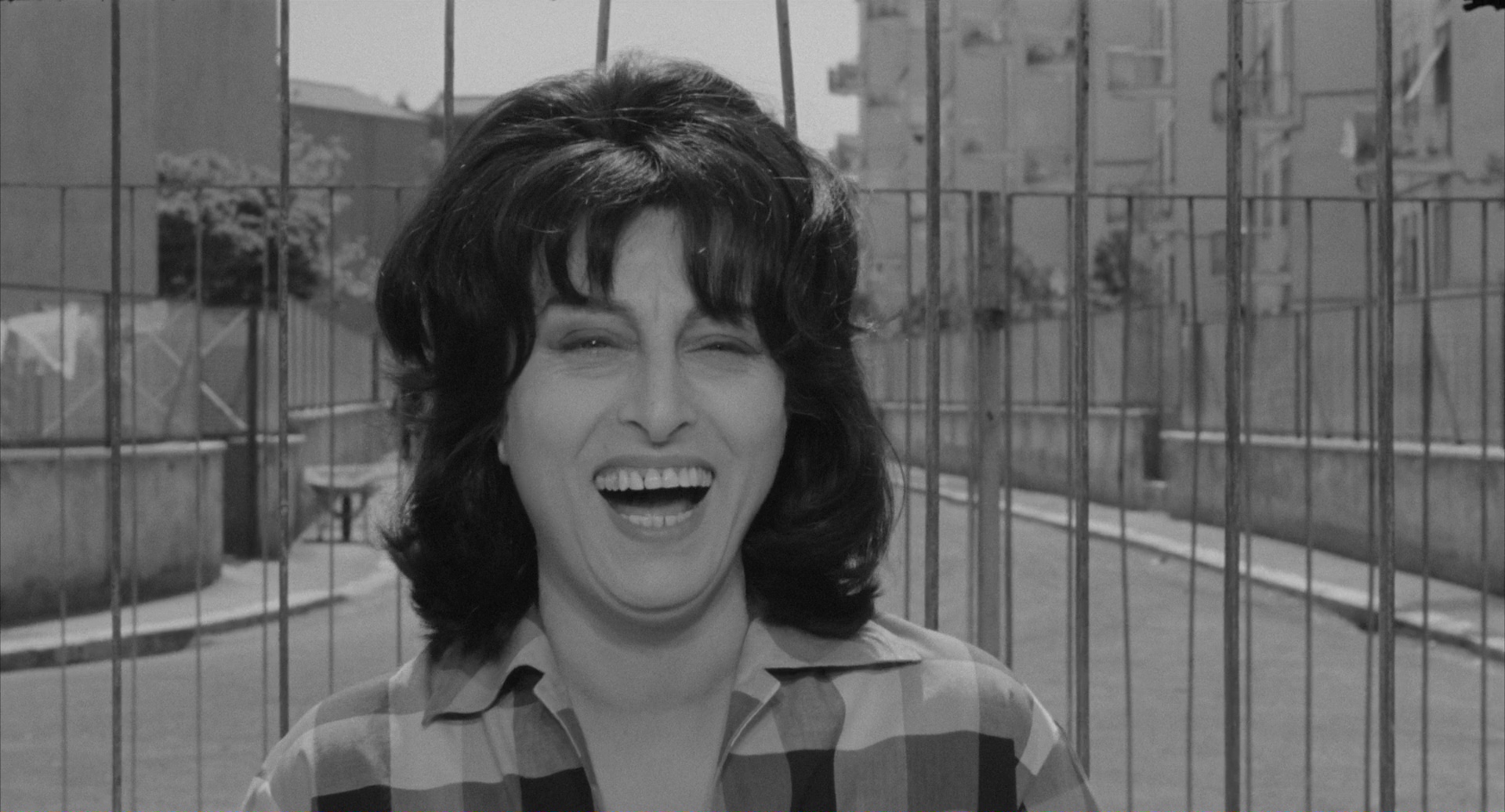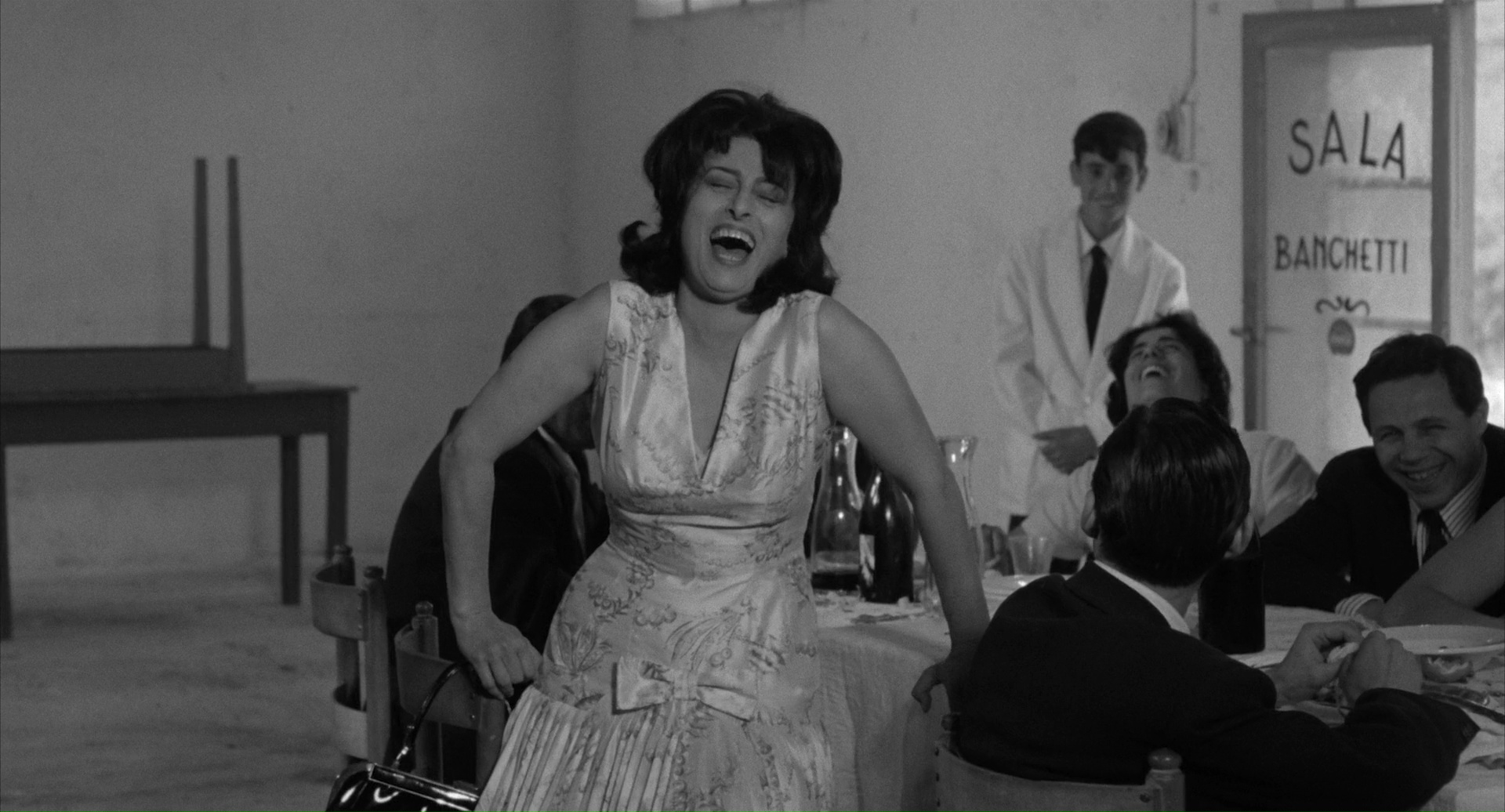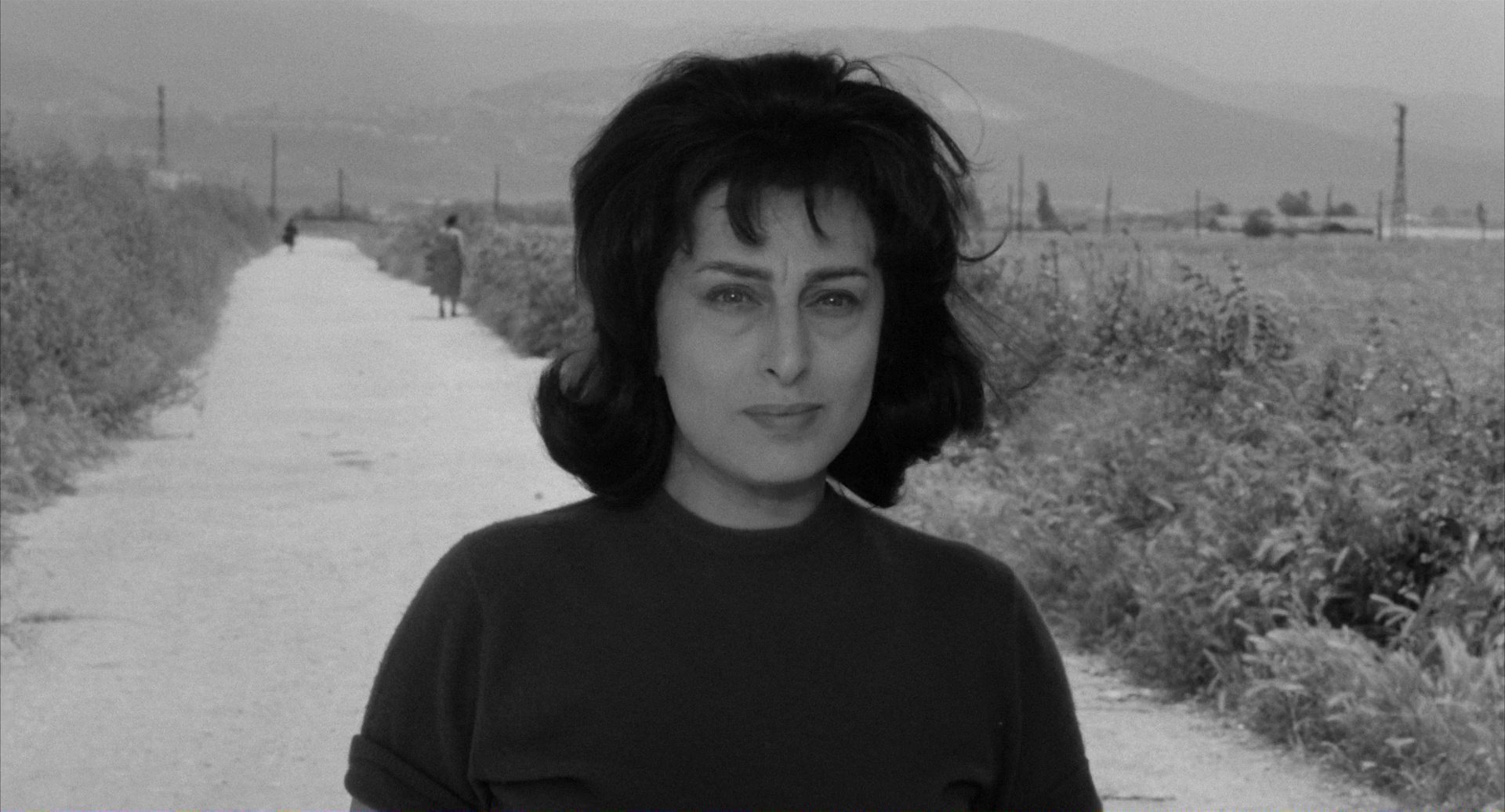“Laugh! Laugh, Anna!”
A Conversation with Anna Magnani
May 4, 1962
Huddled in a doorway along the streets of Cecafumo are the cameraman, the continuity girl, the grip and his crew, all of them, I see, with resigned looks on their faces. Under a large umbrella is di Carlo, my assistant director, and some of the boys who are being filmed today; other cast members stand by the cluttered tables and dismantled equipment. It’s sort of a disaster.
Someone tells me that Magnani wants to talk to me, so I go upstairs to see her in the little room a Cecafumo family is letting her stay in.
There’s tension in the air. We’re both upset by a problem we had with a scene we filmed yesterday, but for different reasons. The only thing we agree on is that we need to retake it.
Magnani explains her view and although it is similar to mine in essence, we have different underlying motivations.

Me: Let’s talk about the scene, Anna. The one where you laugh and ask your son, “Isn’t the motorcycle I bought you nice? Is it the kind you wanted?” That laugh, talk to me about the laugh.
Anna: That laugh... you know even better than I do that in order to express the feeling that you’ve created, that laugh can be executed in so many different ways. It could come first, it could come after, it could be early or it could be delayed. I am a very fragile person. A split second after I began the scene, just when action was called, you shouted, “Laugh! Laugh, Anna!” and I laughed like an idiot. My laugh in that shot felt fake and because it wasn’t spontaneous (I think you’ll agree with me), it threw off the rest of the line. I’m not acting well, it’s true, not well at all, me of all people, the one they call a consummate actress, an old fox...
I agree with you that the scene is not well done. But what I want you to realize – and not just with this scene but with many other scenes like it – is this: my way of telling you to laugh just as you are about to deliver a line, my way of prompting you to inject expression into the scene, is a habit that I picked up from working with non-professional actors who need a final push when they least expect it, to shock them, almost. You have to understand and forgive me for these interruptions and take them for what they are, just a habit.
Of course I do, and that’s why we can talk about it so openly, as friends. I know perfectly well that you work with actors you take from the streets and shape like clay in your hands. Even with their instinctual intelligence, they become your robots. I am not a robot. I have had your script in my hands for three months now. I have read it at least four times. I have analyzed even the smallest detail of feeling, the most important ones, the subtlest ones. Now, as an actress (No! I hate to be called that!), as the instinctive animal that I am, I have become this character. And so, automatically, and thanks to your script, I should do the same for you. But when it comes to Mamma Roma, I am a novice. And so you shout “Laugh, Anna!” or “More serious, Anna!” at me. As a result, I feel a struggle inside of me to please you. On the one hand I feel that I should be able to perform the way you want by relying purely on my own acting skills. On the other hand I see that sometimes we don’t always understand the character in the same way: I feel out of balance. And so I’m neither a good actress (God willing, and thankfully!) nor an obedient robot. I have to be frightfully alive in order to protect myself from dangerous comparisons, Pier Paolo. The boys you direct, whom you mold and maneuver, are far more authentic than I am. And this is a paradox that I can’t let the public see.
I have already thought long and hard about this, Anna. Integrating you with the others is the fundamental problem of my new work as director: I knew it would be difficult. But wouldn’t it be better to remain tacit about this?
No, I think we need to have small conflicts to clarify things. Two intelligent people can always come to some kind of understanding. What’s more, I feel as though I am acting without even being aware of what I am doing and I absolutely need to have awareness.
And I expect it from you; I know I don’t need to ask for it. I don’t want there to be even the slightest unawareness about what you are doing in any of our work together. So, going back to the specific problem we had with the “Laugh! Laugh, Anna!” scene, we agree on two things: that I am wrong to cut in when you’re performing, a mistake which is in part justifiable...; and that you accepted to work with my way of filming, in small visual monads.
Ah, yes. When we shoot a scene and start at the end, sometimes I am confused because I don’t know what’s going on, how the beginning was or will be. Of course, you know... but as a fully conscious actress, I would like to know, too!
Fine, in the future we will study the scenes together from the beginning; we will look at them line by line, so that if you have to start with filming the last line, the difficulty will be purely technical. One thing is for certain: our interpretations of Mamma Roma may differ. But even the most sublime and perfect sonnet by Petrarch leaves room for contrasting interpretations, a screenplay all the more!
Yes, but I have blind faith in your stage notes and I have clear ideas about this particular scene... it’s just that starting at the end I don’t know if I am dosing everything out correctly: the laughter, the emotion, the excitement... I respect your method because I have seen the results. If this is how you created Accattone, I can rest easy. And it’s up to me to get over my complex.

Yes, if we had discussed the “Laugh, Anna” scene beforehand, I would have told you that this is the only moment in the film where there is total happiness, where there are neither shadows nor foreboding. The tragedy explodes immediately afterwards. I don’t want the scene to have any hint of sadness or pain; it should be complete happiness.
I might have laughed a little late because my tone at the beginning was... not quite sadness, but...
Anxiety.
No, not anxiety – inner joy.
Well, I don’t want that either. It needs to be a scene of simple happiness: common, external happiness, if you will. We should have talked about it, and of course there are many things you can do with it because this kind of happiness, this external happiness, can be expressed in an infinite number of ways. All we have to do is look critically at the scenes together.
The rain comes down with insidious abundance on the lung-colored edges of the houses of Cecafumo – each building just like the next, all lined up asymmetrically against the sky of Acquedotti. (In my conversation with Anna there was too much desire to get along). From the windows of the working-class apartment, the street below shines sinister, its market tables falling apart, looking like thousands of wet, upended sawhorses. (Anna’s poetry is, at worst, poetic and naturalistic; mine, at worst, is exquisitely mannerist. I look for plasticity, and in particular the plasticity of an image, never wandering too far from Masaccio and his proud chiaroscuro, his black and white nor from the Archaics and their strange marriage of subtlety and coarseness. I cannot be impressionistic. I love background, not landscape. You can’t create an altarpiece with moving figures. I hate the fact that figures move. That’s why none of my shots begin with a wide field of vision or an empty landscape. There will always be, even minuscule, a human figure. But he’ll be tiny only for an instant, because right away I call out to my faithful Delli Colli to put on the 75 and zoom in: a close up of his face. And behind him, the background. Background, not landscape. Bustling crowds, the gardens of Gethsemane, the desert, vast cloudy skies. Anna is romantic: she sees the figure as part of the landscape, a figure in movement, connected to things as in an impressionistic sketch, with the power of a Renoir. Lights and shadows in movement on both human figure and landscape, a silhouette dancing against a glimpse of the background – which is never seen frontally – riverbanks, choppy seas, déjeneur sur l’herbe, style woods, or Pascarelli alleys). The heavens have opened and it’s pouring rain. At the end of the day, making movies is all about sunlight.

Images from Mamma Roma (Pier Paolo Pasolini, 1962)
This text was originally published as “Diario al registratore,” in Mamma Roma (Milan: Rizzoli, 1962), and later in Accattone. Mamma Roma. Ostia, (Milan: Garzanti, 1993).
Courtesy of Cineteca di Bologna.

